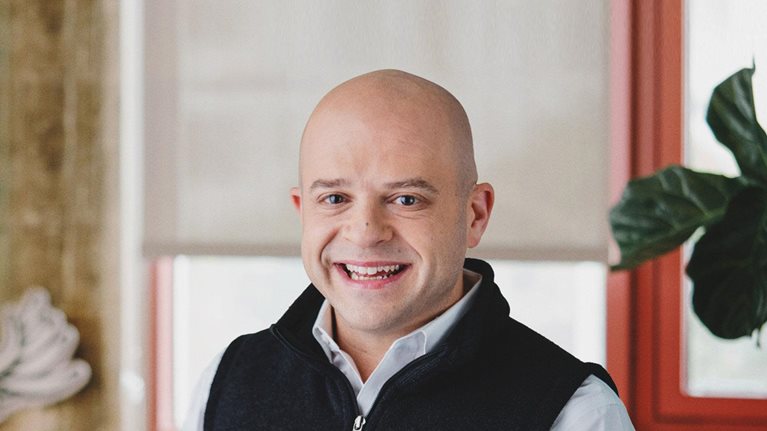Balancing growth and profitability with investor interests is especially tricky for software-as-a-service (SaaS) companies, which have heavy up-front expenses and early revenue but challenges of net retention later on. Few industry executives understand that quandary better than Sue Barsamian, a seasoned leader who today helps SaaS and cybersecurity start-ups chart a course to hypergrowth, serving on the boards of such companies as Five9, Box, and NortonLifeLock. Previously, Barsamian held various executive positions at Hewlett-Packard, including chief sales and marketing officer for Hewlett Packard Enterprise Software. Earlier in her career, she held leadership roles at Mercury Interactive, Critical Path, and Verity. Barsamian spoke recently with McKinsey partner Sid Tandon about the financial challenges that SaaS companies face in their early phases and how leaders and boards can address them for lasting impact. An edited version of their conversation follows.
McKinsey: You sit on boards for companies that are at very different stages in their life cycles—early stage, growth stage, and more mature public companies. How does the thinking around value creation evolve as companies grow and mature over time?
Sue Barsamian: How you think about value creation is highly situational. If you go back to the beginning, obviously product–market fit is job one. Once you get product–market fit, you get go-to-market fit, and then you’re ready to scale. If you’re lucky enough to get through product–market fit and go-to-market fit, and the market is still intact and big enough that you can just throw fuel on the fire, then value creation looks a lot like optimizing growth, because you’ve got the size and capacity in a market to do that.
If you get through that process and you’re still a little constrained in terms of TAM [total addressable market], or the competitive landscape has changed, you may need to actually start running a little bit leaner so that you can invest in your next play, because you’re going to need more opportunity in order to really scale.
McKinsey: Our research shows that although growth is correlated with value creation, it’s efficient growth that investors value. How do you view this?
The biggest indicators that you can be in that top-quartile hypergrowth category are that you’re in a really big market and you’ve got a great product–market fit, along with good net retention.
Sue Barsamian: Growth is obviously the highest correlation to value creation. The biggest indicators that you can be in that top-quartile hypergrowth category are that you’re in a really big market and you’ve got a great product–market fit, along with good net retention. At that point, you’re continuing to invest, but I wouldn’t say at all costs, because at some point you really pivot into healthy growth. The phrase “growing at all costs” can sometimes translate into something like “drunk and disorderly,” but that’s not what it’s about.
I’m a big believer in unit economics even if you are in the hypergrowth category, because you want to be an efficient grower and you want to be putting a dollar of investment where it’s going to deliver the dollar of best return from the go-to-market model specifically. When you have that data, you can decide whether—if it’s a public company—you give that profit back to investors, or you invest in some new distribution channels or other things that are going to really continue to turn that flywheel. I think those become very thoughtful choices when you’re efficient.
The primacy of product–market fit
McKinsey: If you look at it from the vantage point of management teams and boards, what are some of the lessons that companies going through this transition should know? Maybe they’re going from the hypergrowth phase to a more balanced growth plus profitability—what do management teams and boards need to think about?
Sue Barsamian: The thing that I like to do is to separate product fit from go-to-market. I’ve been in a lot of situations where we have focused on go-to-market as what needed to be optimized in order to scale. There’s always some truth to that, because optimizing go-to-market is the race with no finish line. But it doesn’t mean it will solve the problem. Ultimately, product–market fit is the best solution for issues with go-to-market, sales and marketing productivity, and also net retention.
We’re increasingly spending more time looking at product–market fit in a better balance with the amount of time that we have historically spent on go-to-market. Because go-to-market is a bigger opex [operating expenditure] line in the P&L, it has tended to overweight the discussion.
McKinsey: How do boards and CEOs assess product–market fit? What’s the level of depth you go into—for example, with metrics? There’s a lot going on at that point in a company’s life cycle, so from the management team perspective and the board perspective, how do you handle it?
Sue Barsamian: We’re talking specifically about the SaaS sector here, which created the category of customer-success management and the focus on that customer retention. All of my boards are very focused on net retention as a leading indicator. Because it comes up once every 12 months, you could argue that maybe it’s a lagging indicator. But we view net retention as a leading indicator because the things that go along with it—customer adoption and engagement—are important. Are customers getting the value creation they were hoping for? Are they getting the verified outcomes from your product that they were hoping for? And what are the indicators that you are in the sticky category—from an adoption and engagement perspective—even before you get up to that first 12-month renewal?
At a number of my boards, we’re deep in net retention, analytics, and dashboards, looking at customer-health scorecards with the analysis that says, “These are the three things about how customers use our product that are the most important to stickiness and retention.” It sounds simple, but it’s really important to know what drives stickiness with the customer—whether it’s a type of engagement or integration, this workflow, or this specific activity that really embeds the customer with your product. As you know from your own analysis at McKinsey, magic happens when you get above 120 percent net dollar retention.
Mastering metrics and taking advantage of tools
McKinsey: How do you start decomposing the information on customer dashboards? When you’re looking at earlier-stage hypergrowth companies versus later-stage companies, how do you think about cross-sell, upsell, customer attrition, things like that?
Sue Barsamian: The good news is you’ve got a number of trends converging. Customer-success management is really maturing as a category. Along with that, really great customer-health dashboards are continuing to evolve. And now, you’ve got AI-enabled data onto those dashboards, which is really maturing.
Another thing that’s pivotal is the whole onslaught of revops—revenue-operations tools. These let you look at the customer life cycle and everything about go-to-market holistically, really end-to-end. The tools let you wrap your arms around marketing, around the sales process, around the retention and renewal process, and that whole end-to-end life cycle and get instrumentation across it so that you can do very specific things, especially around automation.
These changes are exciting. I haven’t been an operator now for four to five years since I’ve been focusing on my board portfolio, and sometimes I look at what’s happening out there and think, “Darn, I wish I could go back and be an operator.” There are tools to help you target the right customers, make sure you’re focusing on the highest-potential new accounts, as well as the highest-potential customers in your installed base, make sure that they have the best content, the best chatbots and videos, the best self-service models, because everybody wants to do it themselves. You can improve things like workflow and orchestration.
At the same time, there is a risk of drowning in the data and the tools and ending up with a bunch of fragmented bits of automation. Still, if you really follow the construct of revops, then you can connect both the insight as well as the baton passes of the automation through this whole customer life cycle of marketing, sales, customer success, and renewals. It lets you do things that I never had the benefit of when I was an operator.
Hybrid work’s new culture of transparency
McKinsey: Many of the new tools have also taken on a bigger role during the COVID-19 pandemic, with many people working from home. What have you seen SaaS companies do to pivot to a remote environment, which is different from how they used to operate before?
Sue Barsamian: Like so many other things in the pandemic, the crisis accelerated the inevitable. It accelerated the digitization of the customer life cycle, including the selling process. You couldn’t go visit customers. And you couldn’t sit in a room with your young sales reps. That’s traditionally been a very bullpen-oriented model, where you sit in a hub, you’ve got leaderboards, and you’re running enablement sessions.
Would you like to learn more about our Technology, Media & Telecommunications Practice?
There are many wonderful things about that from an enablement and camaraderie perspective, but it’s like so many things in COVID-19: you figure out that hybrid is actually better. It’s not that you don’t want your young sales employees back in the hub. You do because there are so many wonderful things that go along with that from a mentoring perspective. But there’s no substitute for being able to analyze a sales call, listening to reps and their customers, and you discover that when you don’t have a choice. The tools that people might have been toying with before were now being relied upon, because you couldn’t walk up and down the cubes, and you were suddenly working in an asynchronous fashion.
I just saw such an advancement in this change—I love the culture of openness it brings. Reps these days understand that everything’s IP based, and that they’re going to be analyzed from a coaching perspective, and that’s a very healthy acceptance. I think it makes for a more productive and certainly a more efficient sales model.
Leading through the stages of growth
McKinsey: How do you think about balancing the needs of different stakeholders? The way the SaaS model works, it’s investment-heavy up front, and the revenue comes in earlier. So how do you handle investor communications and shareholders while balancing profitability, investment, and growth?
Sue Barsamian: It’s super important to be aligned because you can end up in a lot of subjective discussions about, “OK, we need to squeeze out more profit.” Or “We need to grow at all costs.” You don’t want to get into a subjective argument about that.
The data will tell you whether you’re a hypergrowth grower. It’ll tell you, could you get to the Rule of 40 with 40 to 50 percent growth and being unprofitable? Or are you a 30 percent grower and you’re going to have to deliver at least ten points of free cash flow? Or are you a 20 percent grower and you’re looking at a 20–20 model?
The first question is, based on where you are in the public–private journey, and based on where your peers are, when do you think you need to get to the Rule of 40? And then, are we a 50-minus-10 company, a 40/0, a 30/10, a 20/20? And if you’re a 50 minus 10, I would still argue that you need to run a highly efficient company, with unit economics and all of the basics, because the best way to stay at 50 is to be very clear on investing for that net, as you say in your SaaS Rule of 40 article, investing in the next $50 million.
Where you get constrained is when you’re a 20/20 grower and you really don’t have enough potential leeway to place a lot more bets for that next 50. You’re more constrained because you’re delivering more free cash flow.
Obviously, if you’ve identified a big market, if you have a great product–market fit within that market, and you’re running an efficient model, then you can be investing aggressively to keep that hypergrowth rate up. Of course, that’s where we all want to be. If you’re lucky enough to be in a big market with the right product, you want to run that model all day long.
McKinsey: What’s your sense of the mindsets and behaviors of leaders as they take their companies through these transitions, from one S-curve to the next?
Sue Barsamian: Look, it’s hard growing these companies. It’s hard being an entrepreneur. In my experience and observation, the best thing you can do is be rigorous about the product and the product–market fit, and then be realistic about your growth rate. Growth often decelerates—it’s just the law of large numbers. There are a number of gravitational forces that cause growth to decelerate. And the question becomes, “How realistic are you about what your growth is and can be?”
Many people spend years trying to recapture growth by optimizing go-to-market. And, again, there’s nothing wrong with optimizing go-to-market. You will always do it. But it’s also important to understand when optimizing go-to-market won’t get you all the way there, won’t get you back to your 40 percent, 50 percent growth, because you’re TAM-constrained or the competition has heated up or you’re not as frictionless as you need to be from a customer-experience perspective. And there are other headwinds. Before you even get to go-to-market, there are headwinds upstream in product–market fit.
It’s really important for a management team and a board to call the ball so that you don’t spend a bunch of time trying to fix potentially the wrong problem. That’s what happens when people think the problem is sales and marketing and throw more money at what is already the biggest opex line item in the P&L. That can really turn things upside down and ultimately not solve the problem. And it goes back to really making sure that you have metrics for product–market fit, just like you have metrics for go-to-market, so that then you’re solving the right problem and you’re realistic about where you can actually get your growth profile.

SaaS and the Rule of 40: Keys to the critical value creation metric
Diversity in the C-suite and boardroom
McKinsey: I want to switch topics a little bit and talk about women in tech. You are one of a too-small number of women tech leaders. What are your thoughts about the progress toward bringing more women onto executive teams and boards?
Sue Barsamian: We’re making great progress on boards, thankfully. My boards are all in California, which, like several other states and now like Nasdaq, has a diversity mandate for companies headquartered here. It’s not just about women. We need ethnic diversity and cultural diversity. We need gender diversity. We need age diversity. We need all of the above. It just makes for a better company, a better leadership team, and a better board. Boards, particularly in California, have made tremendous progress in the last couple of years.
I’m feeling really good about that. All my boards are quite balanced in terms of all aspects of diversity mix, though it’s something that we continue to work on. Our progress has been really significant, and we’ve been very focused on it. I especially like the increasing culture of transparency. Even though we don’t have all the diversity metrics where we want them to be, we are regularly reviewing and measuring them. We certainly do at the board level, whether it’s pay equality, whether it’s the gender or the diversity mix in the employee base at large, in management, in early management versus senior management. We look at everything.
And we set policies, sometimes targets, but we definitely agree on process changes. And if that doesn’t work, we actually will resort to targets. More and more companies, particularly public companies, are actually publicizing this as part of their ESG [environmental, social, and governance] reporting. I think that’s all positive. And I think that COVID-19 has highlighted, specifically with respect to women, the risk and the opportunity. The risk is, when women with families had to also be homeschoolers—a lot of this burden does fall on women—people really worried about the attrition of women in the workforce.
And then the flip side was the benefits of remote work and a bit of a hybrid lifestyle, especially for families. Certainly, I liked that I could get the laundry done during Zoom calls on Friday, so I could actually decompress and enjoy the weekend.
I’m not sure we’ll go back to how we worked before. I think people will go back into the office, but I think the world will be hybrid for sure. And people will have more flexibility to balance their lives, and that will absolutely benefit women and young families in general.


